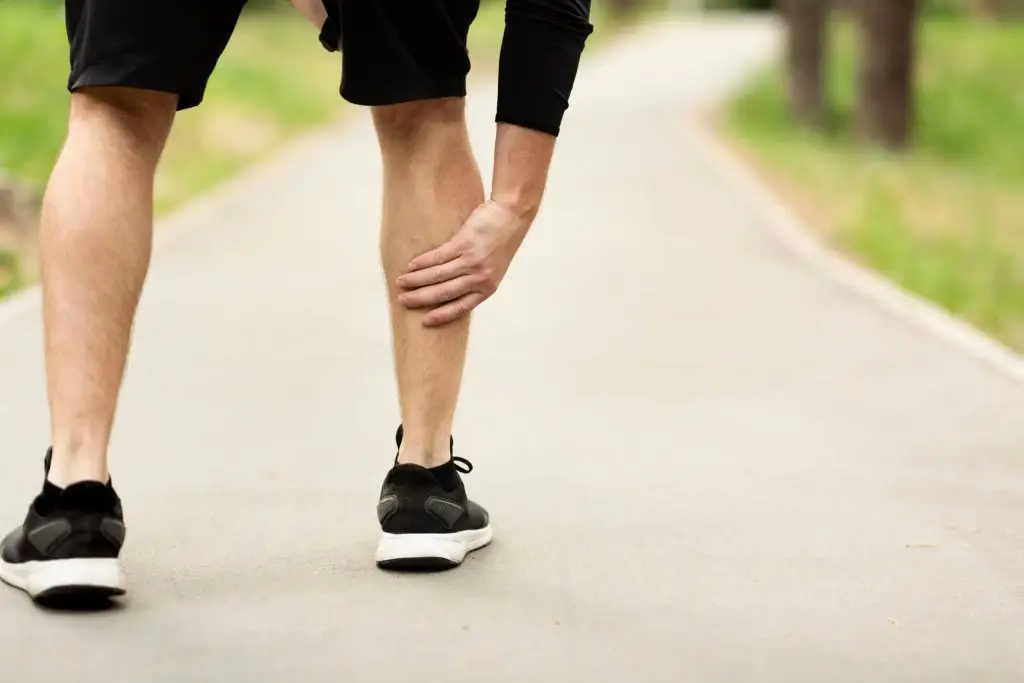Calf pain when walking is a common experience that can affect people of all ages and activity levels. Whether you’re a seasoned runner, someone who enjoys leisurely strolls, or even someone who’s not physically active, an ache in your calves while walking can be both frustrating and concerning.
Most calf pain subsides on its own after a few days of rest or intentional treatment with ice, heat or compression. And even if your calf pain is getting worse, or not going away on its own, there are several avenues you can explore without having to make an appointment with your primary care provider.
Who is likely to get calf muscle pain?
While calf pain can happen to anyone, certain risk factors make some people more prone to it than others. People at higher risk for frequent calf or leg pain can include:
- Athletes and regular exercisers
- People over the age of 65
- Those who have certain health conditions like hypermobility
- Taking cholesterol-lowering medications (statins)
- Chronic conditions such as kidney disease, liver disease, or diabetes
- Edema (fluid buildup) in the lower legs
- Dehydration
- Smoking
Understanding these risk factors can help you identify whether you fall into one of these categories and would be important to mention to a medical professional if you see one.
Causes of calf pain when walking
Calf pain has a wide range of potential causes depending on your symptoms and overall health. Here are the most common reasons your calves might hurt while walking:
1. Cramps
A sudden and sharp contraction of the calf muscle can cause significant short-term pain. Cramps can result from dehydration, poor circulation, or overexertion. If you’re getting cramps all the time, it may be helpful to see a physical therapist to decipher why.
2. Contusions (bruises)
Direct impacts to your calf can bruise the muscle and cause pain. Folks who are older may find that bruises heal more slowly and are more sensitive than earlier in life.
3. Shin splints
Though often associated with pain in the front of the lower leg, shin splints can also affect the calves, especially in runners or people trying out new exercises.
4. Strains
A pulled muscle or strain occurs when the muscle fibers are stretched beyond their capacity. This can happen during physical activity that pushes your fitness limits or during sudden, awkward movement.
5. Tendonitis
When the Achilles tendon, which connects the calf muscles to the heel bone, becomes inflamed due to overuse or improper footwear, it can lead to calf pain.
The key to finding relief that’s both quick and long-lasting is to actually treat the underlying cause, whether it’s too much exertion, a certain activity that has always hurt your calves, or injury to another part of the leg that results in calf pain. Talking with a physical therapist or other healthcare professional is a great way to process your symptoms and isolate the main cause of your pain, which makes treatment highly targeted and more successful.
Preventing calf pain
The good news is that you can often prevent or alleviate calf pain when walking on your own.
1. Warm up or stretch
Before you head out for a walk or run, take the time to properly warm up your muscles. Stretching your calves or doing a few warm-up exercises before a run thoroughly reduces the risk of cramps or strains.
2. Stay hydrated
Hydration is essential for avoiding muscle cramps. But staying hydrated isn’t just about drinking a lot of Gatorade after a workout – it’s about maintaining hydration well before and long after you sweat. If you’re feeling cramps regularly, it may be due to a lack of hydration in general, not just when you exercise.
3. Invest in the right shoes
Wearing supportive, well-fitting shoes minimizes unnecessary strain on the calves. Sometimes a person’s walking style, or gait, can change throughout their life, which means that a shoe that used to be just fine is now causing pain.
Our balance and gait specialists can help identify places where your walking mechanics might be out of sync or unbalanced to help you move better in any kind of footwear. Some people may also benefit from the support of a custom orthotic, which our physical therapists can help you find a provider.
Treating calf pain with targeted physical therapy
When at-home remedies or even a new pair of shoes don’t help your persistent calf pain, physical therapy may offer solutions that go beyond a weekly appointment. We always meet with new patients one-on-one to find out exactly what they’re worried about and what options they have for their lifestyle and goals.
Some treatments are administered by our team, but others are simply recommendations to help you live your life more fully and enjoyably, including:
- Increasing fitness level
- Change in medication approved by doctor
- Quitting smoking
- Compression socks or calf wraps
- Gait analysis
- Kinesio tape
- Dry needling
Professional calf pain treatments in El Paso
Calf pain doesn’t have to keep you from enjoying your favorite activities. While prevention and at-home care can go a long way, chronic or persistent symptoms often require specialized treatment from a physical therapist who understands your needs.
Start the conversation with our team by calling one of our nearby locations in El Paso and Las Cruces or by requesting your appointment online today!
